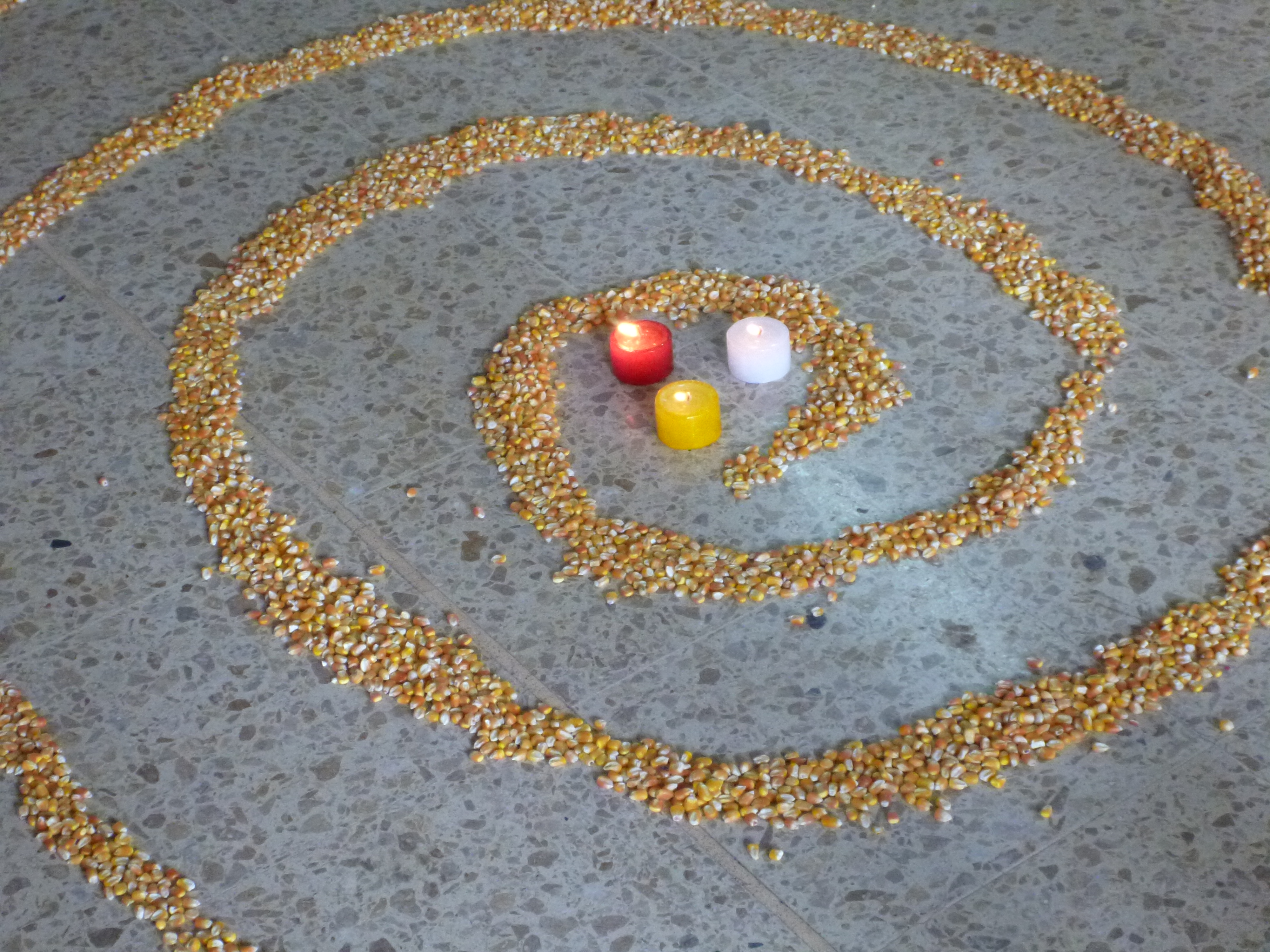The Transfigured Heart – a reflection by Trudy Lebans
Theological Reflection – Sunday February 10, 2013
Trudy Lebans lives in British Columbia. She is an Anglican priest who loves the wisdom and challenge of the bible. She also thinks the church needs to move beyond boundaries of doctrine and into freedom of practice and community. She is a spouse, a mother, and a grandmother who loves really big dogs.
Luke 9:28-43
Lorna Crozier writes that, after bringing some thick socks and some articles of memory, “In your bag leave room for sadness, leave room for another language…. Take the dream you’ve been having since you were a child, the one with open fields and the wind sounding. Mistrust no one who offers you water from a well, a songbird’s feather, something that’s been mended twice. Always travel lighter than the heart.”[1]
At the beginning of chapter 9, Luke tells us that Jesus charges the disciples with a mission. He gives them “power and authority over all demons” and the ability to heal. He tells them to bring nothing for the journey but to be entirely dependent on what the road offers and the kindness of others.
The story of the transfiguration is framed by stories of ministry on the road. To notice these frames allows us to see the purpose of the ecstatic experience for the disciples, for new Christians reading the story then, and indeed, for ourselves in this transitional time in the church.
Eight days after Jesus directs the disciples, the story says that he takes three of them up the mountain to pray. Even though they were very tired from walking the dusty rural paths and the stony roads of Roman oppression, they forced themselves to watch Jesus in prayer. Have you ever noticed that they seem better at watching prayer than actually praying? They suddenly saw Jesus in a new light, standing in the glory of Moses and Elijah, both icons of the history of leadership and authority and tradition. They overheard the plan to enter Jerusalem where it is expected Jesus might be arrested. They are covered and silenced by a cloud and experience the divine purpose alive in Jesus.
Jesus has little input at this point because what is happening is not primarily happening to or for him. This is about a perspective for the disciples who will lead the community beyond Jerusalem. It is a mystical doorway into a vision of being human, a way for them to translate the wonder and cloudy mystery of Jesus into action. Predictably, Peter decides the only way to come to terms with the mystery is to build a monument, a shrine. It seems to me that he wants to enshrine his experience and his explanation of this revelation. It also seems to me that we should be understanding rather than critical of Peter. After all, for the last 1600 years we too have been caught up in trying to contain experience in concrete forms. Like Mary pondering the unexplainable in her heart, the implications of this experience deepen beyond words for the disciples. The mystery can be “understood” only in terms of embodiment.
When they return from their “mountain top” experience, they discover that the other disciples have been waiting for Jesus to act in a healing. Jesus is furious that their compassion was inadequate to the task and that the child continued to suffer. The story goes on to challenge the disciples’ self-importance and their ideas about servanthood. They would rather call down lightning to consume what they perceive as obstacles (v 54) than respond to their call to care for others. Power to punish, but a failure to heal. At the end of chapter, Jesus’ mission is emphasized again.
This story is a cautionary tale for the church in every age. It is about the power of a transfigured perspective to change behavior and belief. Our ideas about and experience of Jesus have value only insofar as they propel us to act with humility. While we would like to capture the faith in a shrine or a doctrine, the divine expressed in incarnation or in ecstatic trance is subject to the trials of the journey, fatigue, sore feet, misunderstandings. Never does Jesus promise the solidity of a mausoleum or palace.
Our experiences of the promise for humanity incarnate in Jesus cannot be exclusively for our own contemplation. Experience of transfiguration needs to spur us to act as the healing hands of Jesus, to walk the paths of the world with courage, determination and compassion, to persistently believe that the light that was in Jesus illuminates all. Thomas Merton calls it the dance of the cosmos in which all celebrate together because our humanity has made the leap into divine joy. In her song Amen, Sarah Slean writes, “Running on empty, thinking maybe I’ll see a sign. But if I open up my heart, some one will say, Amen.”[2]
The transfiguration story offers us choices about how we interpret the visions we have been given. When we glimpse the wonder and love of Jesus, does it cause us to open doors? Does it cause to dare to make friends with strangers? Does it toss us out into the work of healing and offering good news? I hope it challenges us onto the journey of compassion and the social evolution of humanity. Easter calls us to the promise of a new world of freedom from fear, a world in which we have chosen life in the land of milk and honey. We call that nation, earth. Maybe we will see the sign and open up our hearts.









